Plants that survive extreme climates. Some specimens in the garden of my workplace. // Plantas que sobreviven a climas extremos. Algunos ejemplares en el jardín de mi sitio de trabajo.[ENG-ESP]
The site is in an area where the soil is arid and there is little water supply. Besides the watering is not constant because the people in charge only go a few days a week and that is when they water them. These plants offer their beauty despite the fact that the predominant color throughout the garden is green, although in different shades, but combined with others of their species with different details and shapes make it attractive. That's why my interest in them, because their resistance and peculiar beauty call my attention. And more impressive was researching about each kind and knowing their goodness and ability to survive despite the weather or little irrigation. Here I show you at least 5 kinds of these plants.
Saludos a todos los hivers que apoyan está fascinante comunidad de asombrosa naturaleza. Hoy me complace presentarles una variedad de plantas que aguantan temperaturas altas, en suelos áridos y semiáridos. Cuando vemos un jardín siempre nos imaginamos bellas flores y hojas verdes aún con el rocío sobre ellas, que transmiten frescura. Pero imaginarse un jardín de plantas que florecen en algunas épocas del año y que más es el tiempo que lucen solo el color de sus hojas, pareciera no muy atrayente. Este es el caso de las plantas que sobreviven en sitios inhóspitos y en condiciones extremas, algunas logran vivir con muy poca agua y aún así regalan su belleza e impresionantes flores que deleitan la vista. Un fin de semana que me tocó trabajar en mantenimiento de un recinto de convenciones, me fijé que tenían secciones de jardines pero casi todas con este tipo de plantas que les menciono.
El recinto está en una zona donde el suelo es árido y hay poco suministro de agua. A parte que el riego no es constante pues las personas encargadas van solo unos días a la semana y allí es que aprovechan de regarlas. Estás plantas brindan su belleza a pesar de que el color predominante en todo el jardín es el verde, aunque en diferentes tonalidades, pero combinadas con otras de su especie con distintos detalles y formas lo hacen atractivo. Por eso mi interés en ellas, pues su resistencia y belleza peculiar llaman mi atención. Y más impresionante fue investigar sobre cada clase y saber sus bondades y capacidad de supervivencia a pesar del clima o el poco riego. Aquí les muestro al menos 5 clases de estas plantas.
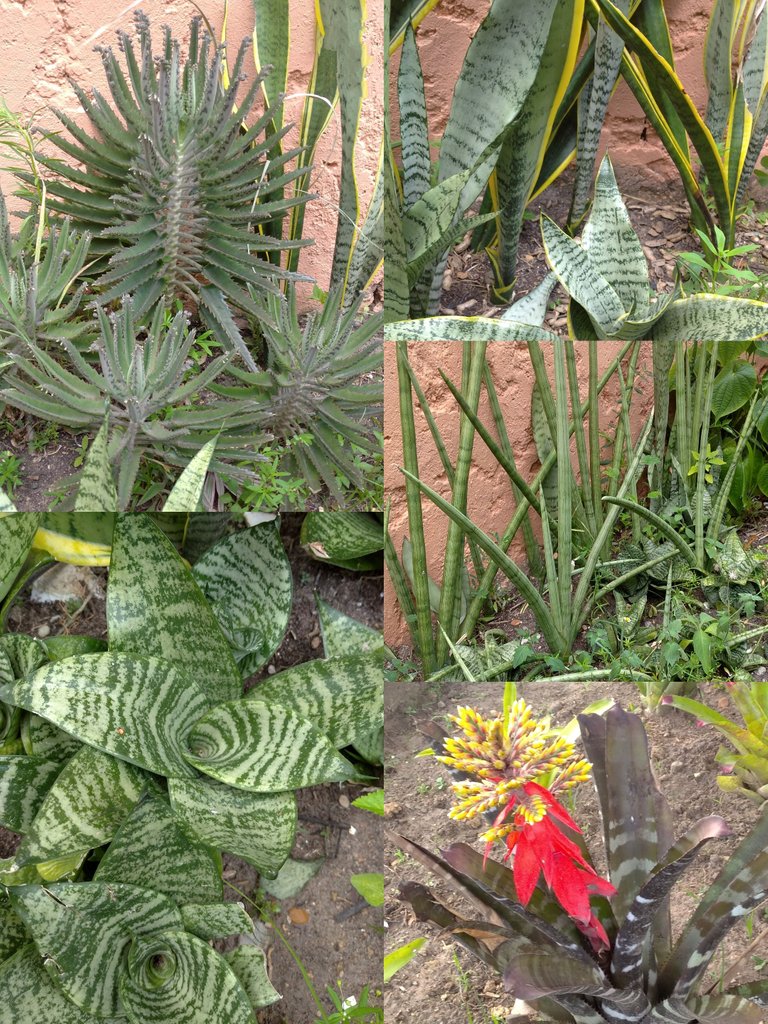

✅Sansevieria trisfasciata.
The genus Sansevieria consists of about 130 species, although only a few are cultivated. In this garden I visited I was able to capture at least 3 types of this species.
Sansevieria trifasciata is the most common of all. It is native to tropical Africa and develops lanceolate, almost vertical green or variegated (green with yellowish margins) leaves. These reach 140 centimeters long by 10 centimeters wide. It is also known as "mother-in-law's tongue or tiger's tongue", what a funny comparison, it must be because of its elongated shape, but all mother-in-law's tongues or at least mine is not like that, hahaha. In this part of the garden I show you, it was planted at the edge of the wall that serves as a fence of that part of the land. You can see that its leaves shine and the yellow of its edges call the attention, in addition to the fact that in spite of the sun they have a strong texture and are erect.
This plant has a great resistance to unfavorable weather conditions, that is why it is part of this peculiar garden. In addition to always looking good with just its leaves, at certain times of the year the flowers appear in clusters a little more than half the length of the leaves, are light in color and produce small orange berries. Unfortunately in this garden none of the ones I could see were in bloom.
El género Sansevieria se compone de unas 130 especies, aunque solo se cultivan unas pocas. En este jardín que visité al menos pude captar 3 tipos de esta especie.
La Sansevieria trisfasciata es la más común de todas. Es originaria de África tropical y desarrolla hoja lanceoladas, y casi verticales de color verde, o variegado (verde con los márgenes amarillentos). Estas llegan a medir 140 centímetros de largo por 10 centímetros de ancho. También se le conoce como "lengua de suegra o lengua de tigre", que jocosa comparación, debe ser por su forma alargada, pero todas las lenguas de las suegras o al menos la de la mía no es así, jajaja. En esta parte del jardín que les muestro fue sembrada a la orilla de la pared que sirve de cerca de esa parte del terreno. Se nota que sus hojas brillan y el amarillo de sus bordes llaman la atención, a parte de que a pesar del sol se ven de textura fuerte y erguidas.
Esta planta tiene una gran resistencia a las condiciones climáticas desfavorables, por eso forma parte de este peculiar jardín. Además de lucir siempre bien solo con sus hojas, en ciertas épocas del año las flores aparecen en racimos de algo más de la mitad de longitud que las hojas, son de tonos claros y producen pequeñas bayas naranjas. Lamentablemente en este jardín las que pude ver ninguna estaba florecida.
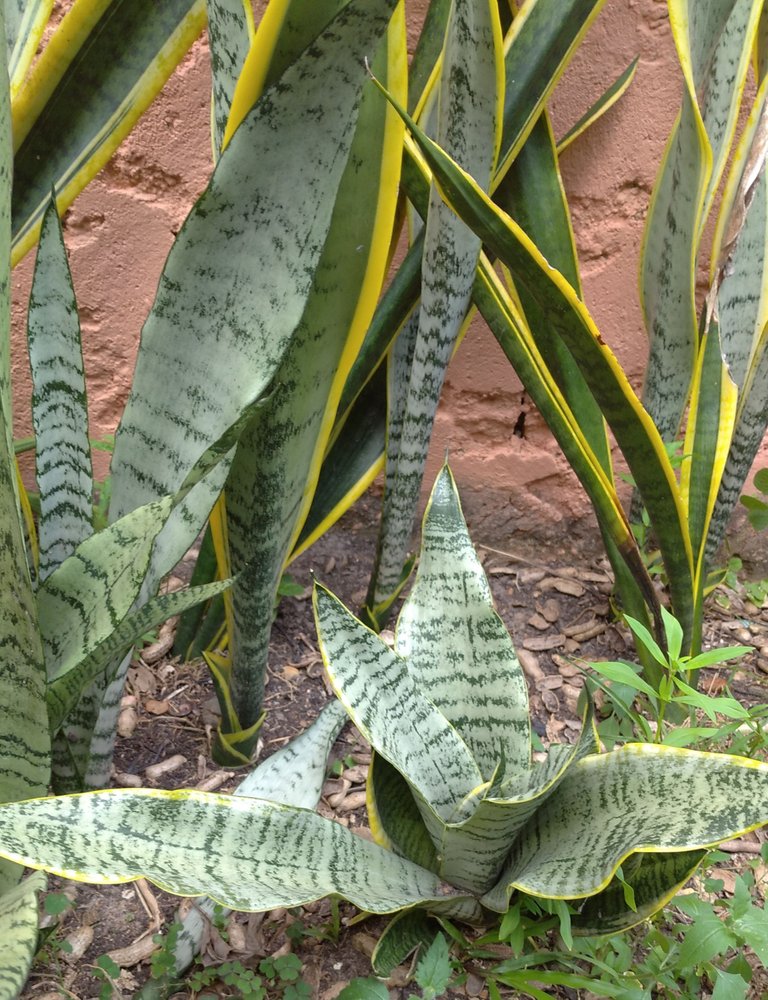
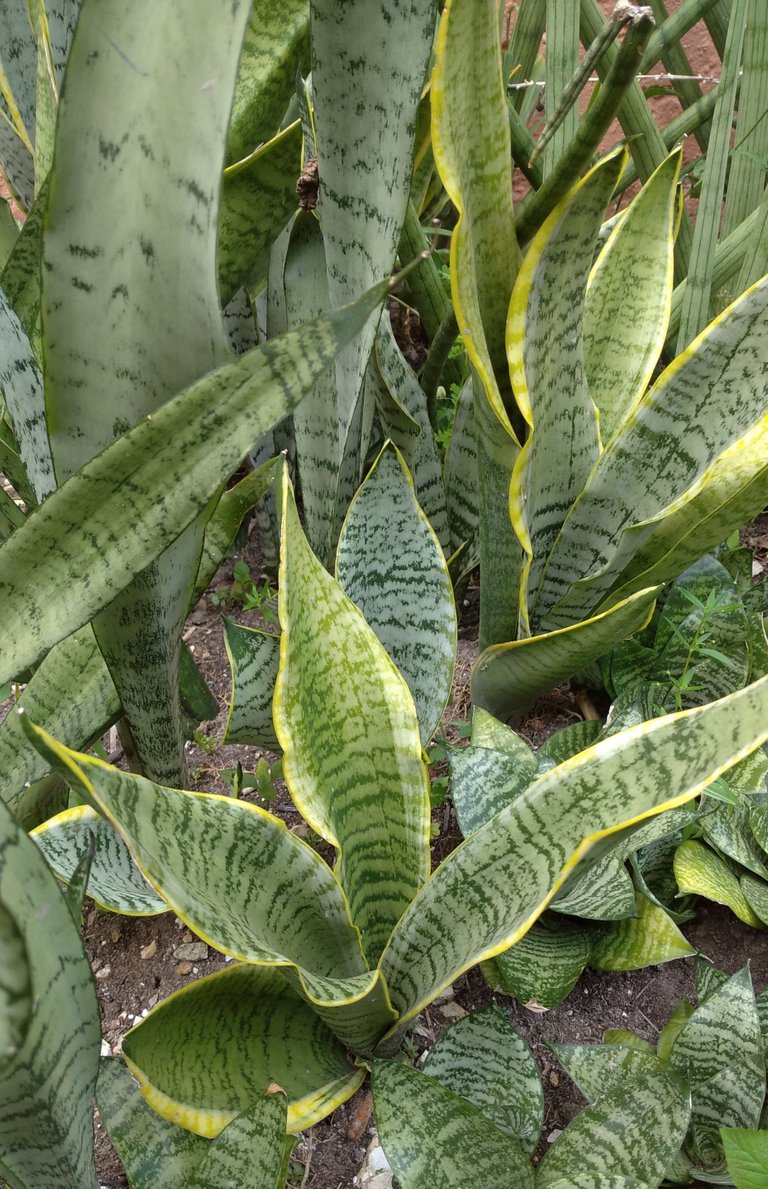

✅Sansevieria trisfaciata var Hahnii.
This plant has wide leaves, but shorter than the "mother-in-law's tongue" with an approximate length of 20 centimeters. The color of its leaves is green and yellow with a striped appearance. These plants I saw were planted just below and around the previous kind of Sansevieria. By its form and structure it also proves to be a plant resistant to the semi-arid climate of the area. In combination with the other plants it stands out because its shape is similar to a large flower, only it is green, with more intense tones than others.
Está planta es de hojas anchas, pero más cortas que la "lengua de suegra" con una longitud aproximada de 20 centímetros. El color de sus hojas es verde y amarillo con apariencia de ser rayada. Estas plantas que vi estaban sembradas justo debajo y alrededores de la clase anterior de Sansevieria. Por su forma y estructura también demuestra ser una planta resistente al clima semiárido de la zona. En combinación con las otras plantas se destaca por qué su forma es parecida a una flor grande, solo que es verde, con tonos más intensos que otros.
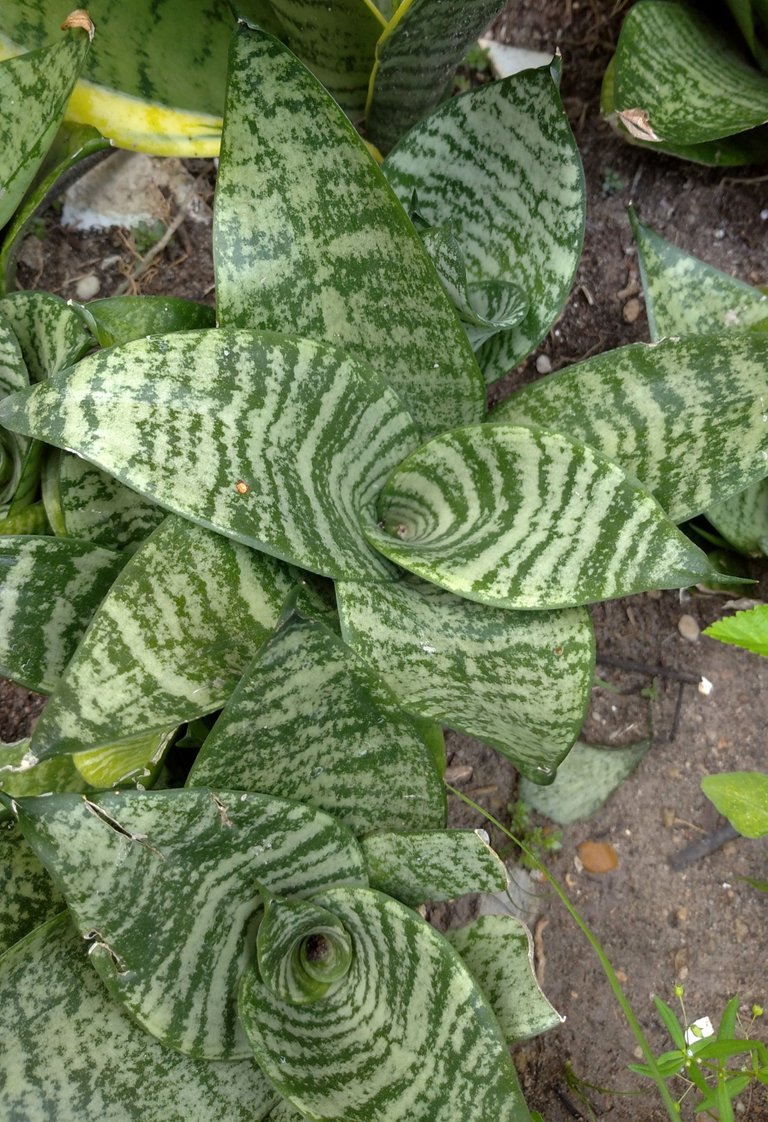
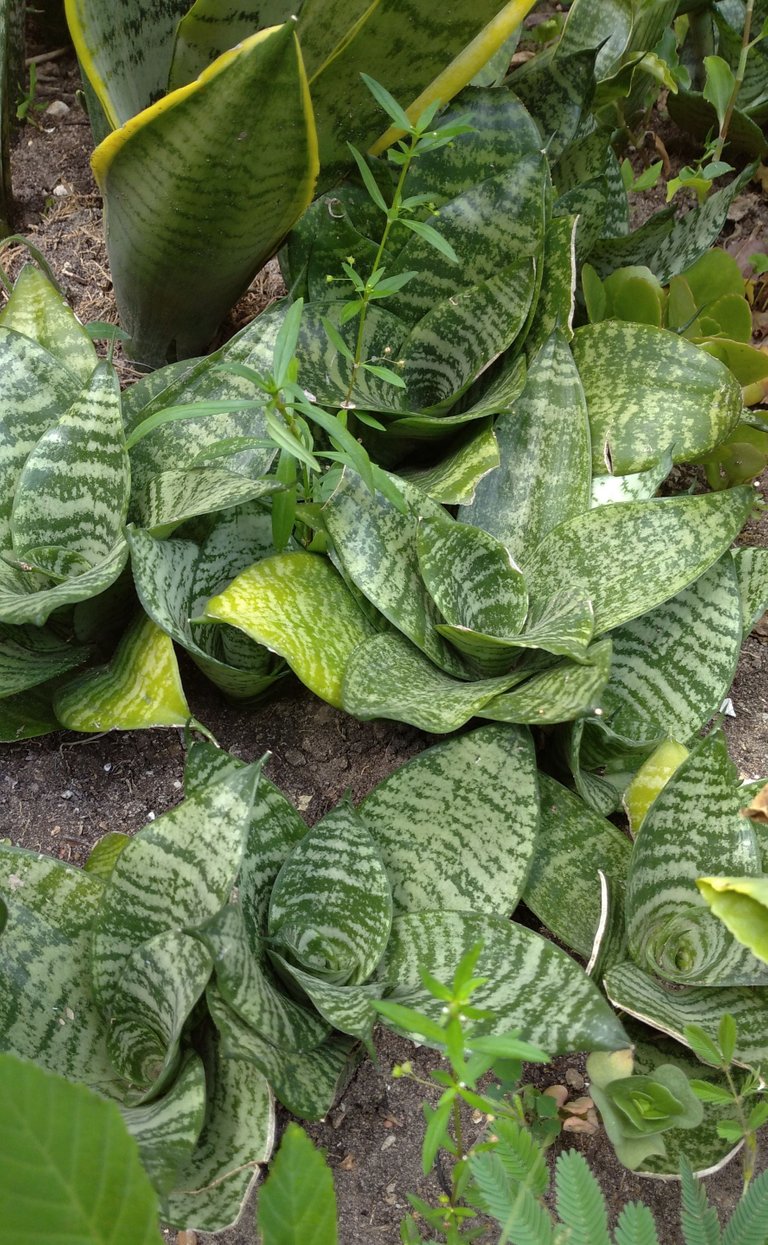

✅Sansevieria cilindrica.
Its leaves are cylindrical and sharp green, with different bands in different shades of green, they grow directly from the ground and have vertical growth. In this garden they were planted next to the "mother-in-law's tongue" also bordering the protection fence of the area. They can be seen lined up and at least 4 or more of their leaves come out of the same matrix. These cylindrical Sansevieria need a light shady situation and should be away from direct sunlight as it can cause burns on their leaves. For that reason they are planted in this part of the enclosure because here only the rays of the sun enter in a few hours of the day.
The soil where they are planted is porous, they do not accumulate water, which favors their perfect development. They can withstand long periods of drought in summer and can be watered once a week or fortnightly. Their leaves are thick because inside they accumulate water reserves that they will use to survive the worst of the dry season. What an impressive way to survive, and with a design made especially for extreme climates. If in this summer season it is kept with little water I imagine in the winter it must need much less water. In the winter it is necessary to take more care of it so that so much water does not damage it and it can be lost. It is also a very resistant plant to insect pests and diseases, undoubtedly an excellent plant species that survives extreme situations.
Sus hojas son cilíndricas y agudas de color verde, presentan distintas bandas en distintos tonos de verde. Se desarrollan directamente desde el suelo y tienen crecimiento vertical. En este jardín fueron sembradas al lado de las "lengua de suegra" también bordeando el cerco de protección de la zona. Se pueden ver alineadas y de una misma matriz salen al menos 4 o más de sus hojas. Estás Sansevieria cilíndricas necesitan una situación de sombra luminosa deben estar lejos de los rayos directos del sol pues pueden provocar quemaduras en sus hojas. Por eso están sembradas en esta parte del recinto pues aquí solo entran los rayos del sol en unas horas del día.
El suelo dónde están sembradas es poroso, no acumulan agua demás lo que favorece su perfecto desarrollo. Pues pueden resistir largos periodos de sequía, en verano y se puede regar una vez a la semana o quincenalmente. Sus hojas son gruesas porque dentro de ellas acumulan reservas de agua que usarán para sobrevivir al peor de la época de sequía. Que impresionante manera de sobrevivir, y con un diseño hecho especial para los climas extremos. Si en esta época de verano se mantiene con poca agua me imagino en el invierno debe necesitar mucho menos agua. En el invierno de seguro hay que cuidarla más para que tanta agua no la vaya a dañar y se pueda perder. También es una planta muy resistente ante plagas de insectos y enfermedades, sin duda una excelente especie de planta que sobrevive a las situaciones extremas.
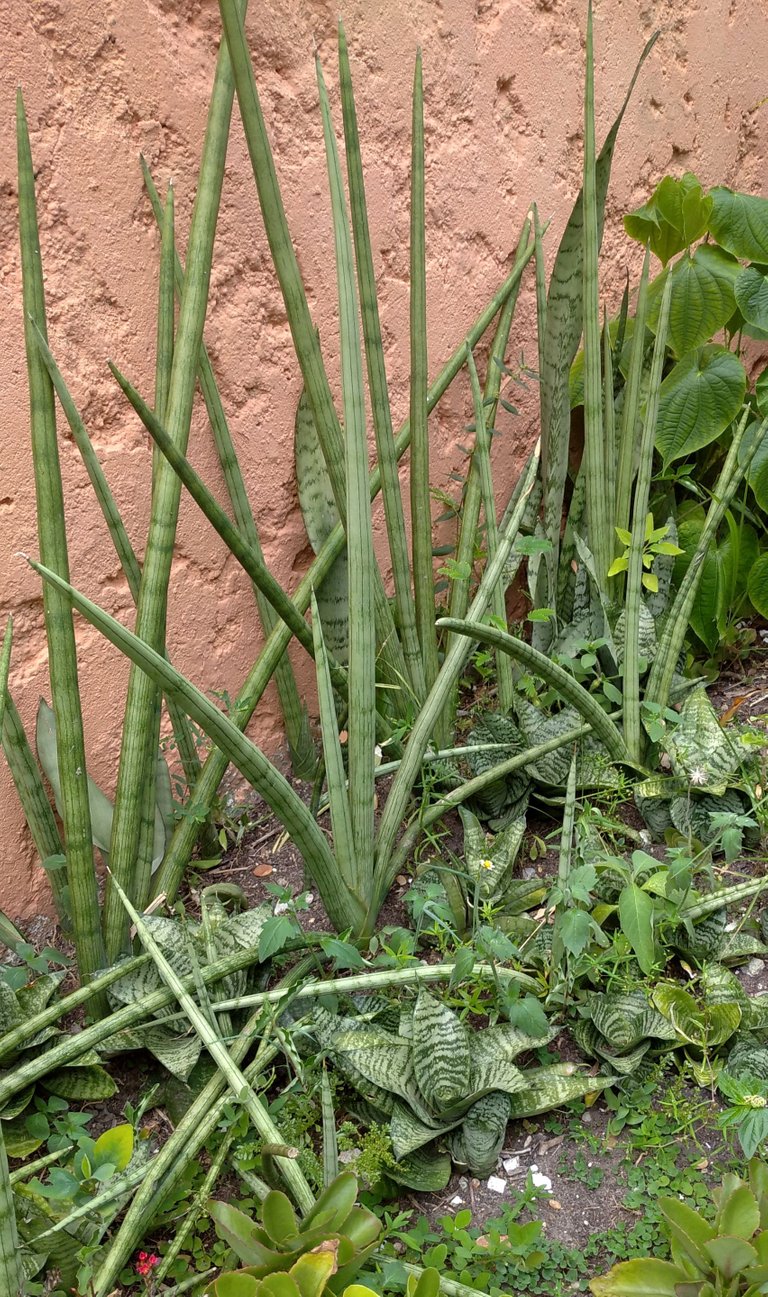

✅ Kalanchoe daigremontiana.Aranto.
This plant captivated me since I saw it for its shape and structure, it is also known as Devil's thorn, it is a succulent plant. Although it is not of the class of Sansevieria, its survival characteristics are similar. These plants are found in arid and semi-arid environments. It is seen around each leaf that have a moderate thickness or fleshy, which produce a few new seedling buds that then detach and emit roots easily to fall to the ground, thus producing a new plant. That is why where it is located there are several specimens close to each other and of different sizes. Each plant can reach up to 1 m in height.
Like the surrounding plants, they also grow in rocky and dry places. They flower sporadically or almost never. On this occasion I see in one of the smaller specimens that on the edges of the leaves there are small white dots similar to flowers that are starting to grow. And on the edge of another plant I see the small shoots that when falling to the ground will be the seed for a new plant. Also, the leaves are jagged-edged, tooth-shaped and have a very faint orange color that matches the overall green and striped color of the rest of the leaf. I think the common name for this plant is very well put, hahaha, but its characteristics are weird and yet charming at the same time.
Esta planta me cautivó desde que la Vi por su forma y estructura, con razón también es conocida como espinazo del Diablo, es una planta suculenta. Aunque no es de la clase de la Sansevieria, sus características de supervivencia son similares. Estás plantas son de ambientes áridos y semiáridos. Se ve alrededor de cada hoja que tienen un grosor moderado o carnoso, que producen unos brotes de nuevas plántulas que luego se desprenden y emiten raíces fácilmente al caer al suelo, produciendo así una nueva planta. Por eso dónde está ubicada hay varios ejemplares cercas unos de otros y de diferentes tamaños. Cada planta puede alcanzar hasta 1 m de altura.
Al igual que las plantas que la rodean también crecen en lugares rocosos y secos. Florecen esporádicamente o casi nunca. En esta ocasión veo en uno de los ejemplares mas pequeños que en los bordes de las hojas tienen unos pequeños puntos de color blanco parecidos a flores que inician su crecimiento. Y en el borde de otra planta veo las pequeños retoños que al caer al suelo serán la semilla para una nueva planta. Además las hojas son de bordes irregulares, en forma de dientes y con un color anaranjado muy tenue que combina con el verde total y rayado del resto de la hoja. Creo que el nombre común de esta planta está muy bien puesto, jajaja, pero sus características son raras y a la vez encantadoras.
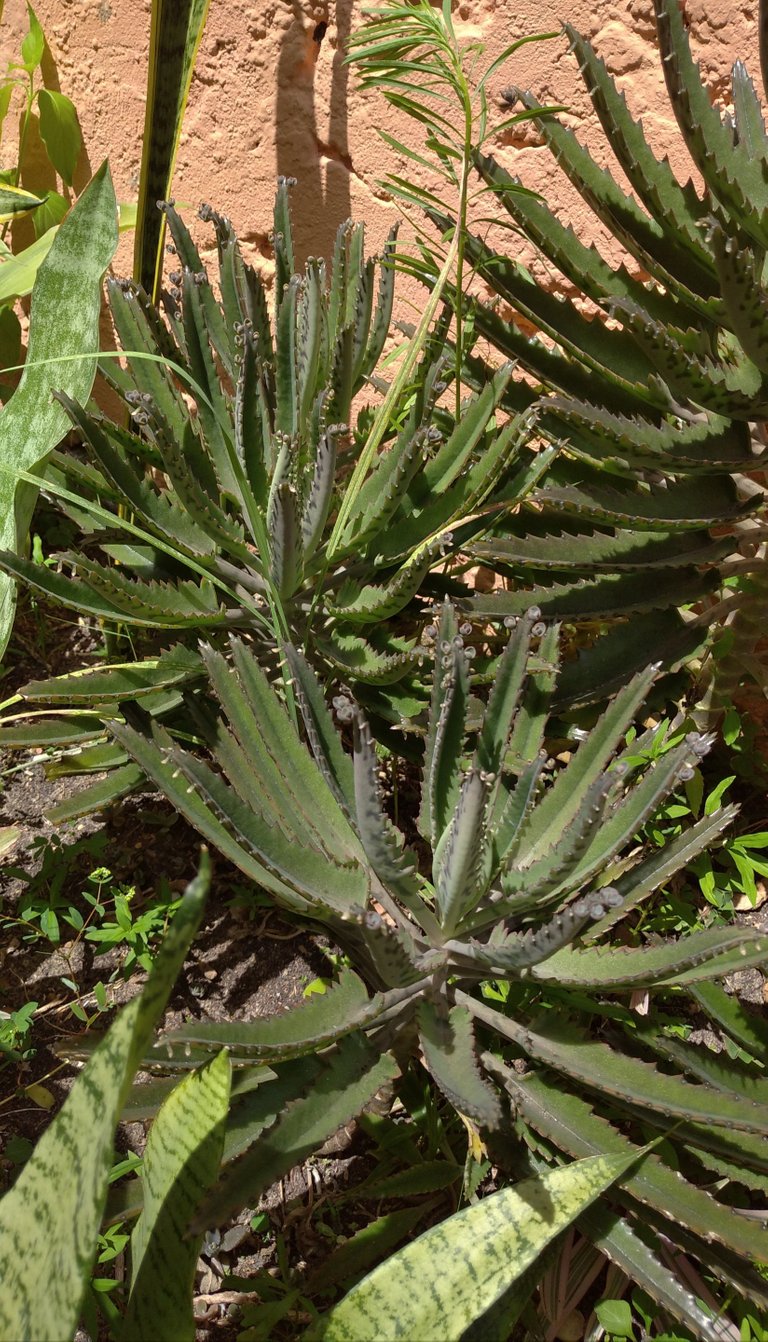
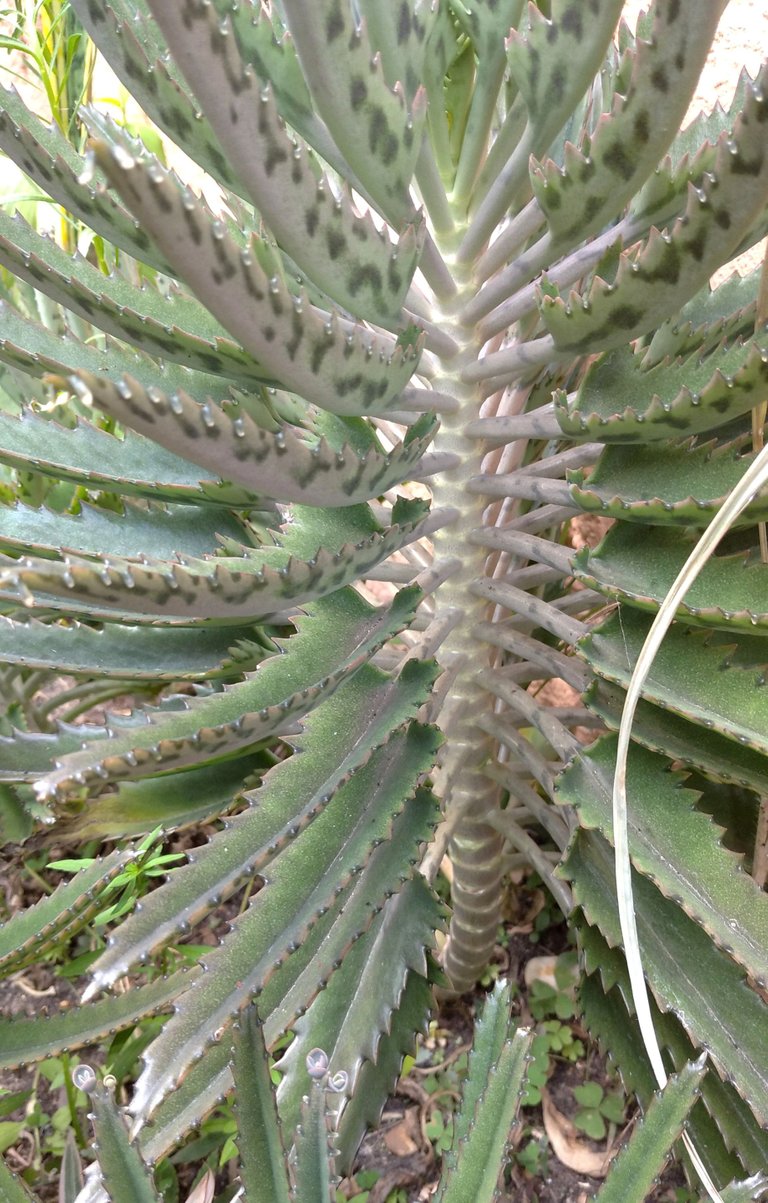
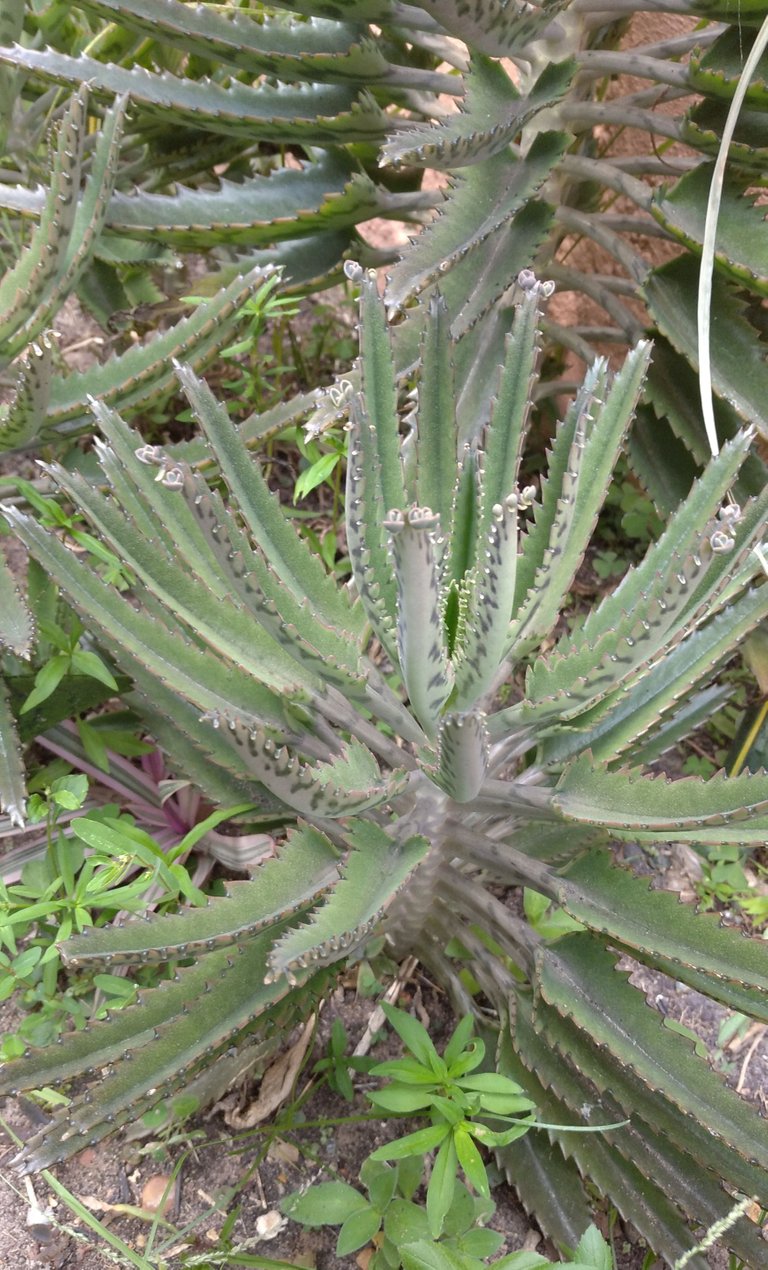
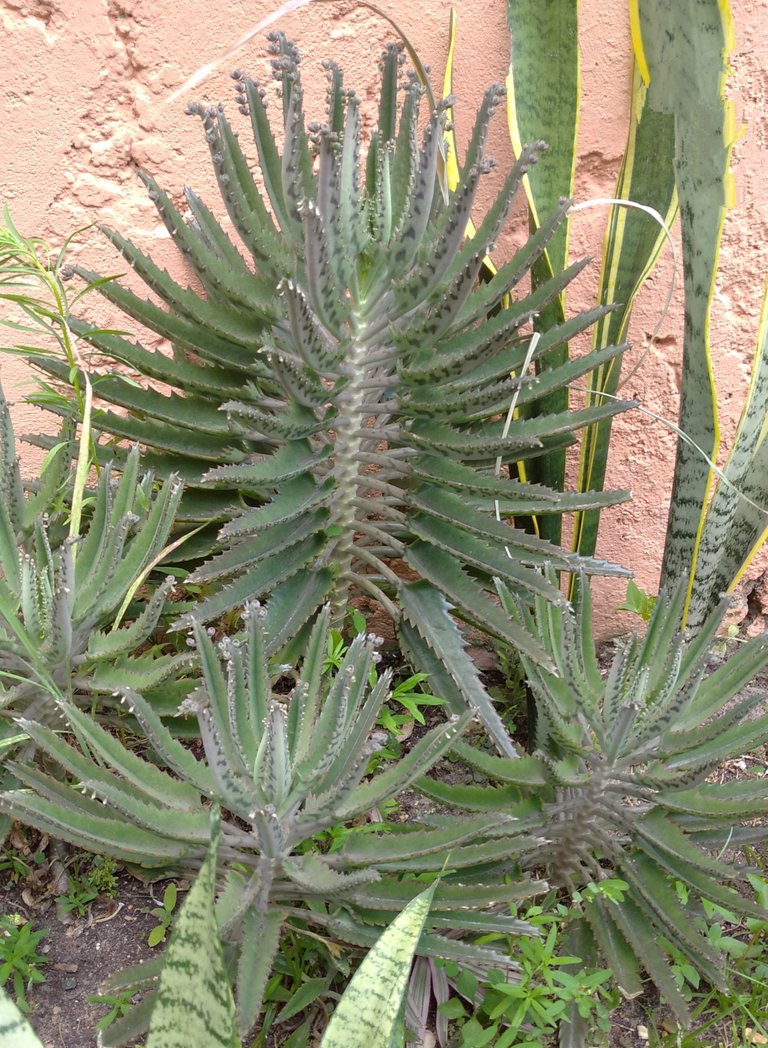

✅Vriesea or Indian Feather. // Vriesea o Pluma de indios.
I left this kind last because it is the plant with the most exotic flower of the whole garden. Already leaving the area where all the plants described above were, in a place where a large palm tree dominates and adorns the entrance to the place, underneath is planted this kind of bromeliad, called Pluma de indios (Indian feather). It is a type of bromeliad common for its "acebradas" leaves (Vriesea splendens). Long recurved leaves, with smooth margins, erect or arched and often spotted with transverse bands. They are of origin of the tropical zones of America like almost all the bromeliads. If it does not have an abundant supply of light, it cannot bloom.
Although this contribution has to be in great quantities it is not advisable that it is direct, as it is the case where it is sowed. This plant receives its respective measure of sun because the palm tree that covers it makes that its rays are not so direct. This species of Indian feather should have moderate watering, without waterlogging and not very copious. The sad news about it is that once it blooms the plant dies and just this specimen that I saw had the flower in all its splendor, of an incredible beauty and colors. The leaves at the base of the flower are scarlet, and at the apex is formed from small pieces something similar to the structure of the pineapple. Its intense yellow colors combined with red make this flower an exuberant beauty of nature. I had the privilege of seeing the flower of this species and being able to capture its beauty in these photos.
Dejé esta clase de último pues es la planta con la flor más exótica de todo el jardín. Ya saliendo de la zona donde estaban todas las plantas descritas anteriormente, en un sitio donde una palmera grande predomina y adorna la entrada al lugar, debajo está sembrada esta clase bromelia, llamada Pluma de indios. Es un tipo de bromeliácea común por sus hojas «acebradas» (Vriesea splendens). De largas hojas recurvadas, de márgenes lisos, erectas o arqueadas y con frecuencia manchadas con bandas transversales. Son de origen de las zonas tropicales de América como casi todas las bromeliáceas. Si no tiene un aporte abundante de luz, no puede florecer.
Aunque ese aporte tenga que ser en grandes cantidades no conviene que sea directo, como es el caso dónde está sembrada. Está planta recibe su respectiva medida de sol pues la palmera que la cubre hace que sus rayos no sean tan directos. Esta especie pluma de indios debe tener riegos moderados, sin encharcamientos y no muy copiosos. La triste noticia sobre ella es que una vez que florece la planta muere y justo este ejemplar que vi tenía la flor en todo su esplendor, de una belleza y colores increíbles. Las hojas de la base de la flor son de color escarlata, y en la cúspide se forma a base de pequeñas piezas algo parecido a la estructura de las piña. Sus colores amarillos intensos combinados con el rojo hacen de esta flor una exótica belleza de la naturaleza. Tuve el privilegio de ver la flor de esta especie y poder capturar su hermosura en estas fotos.
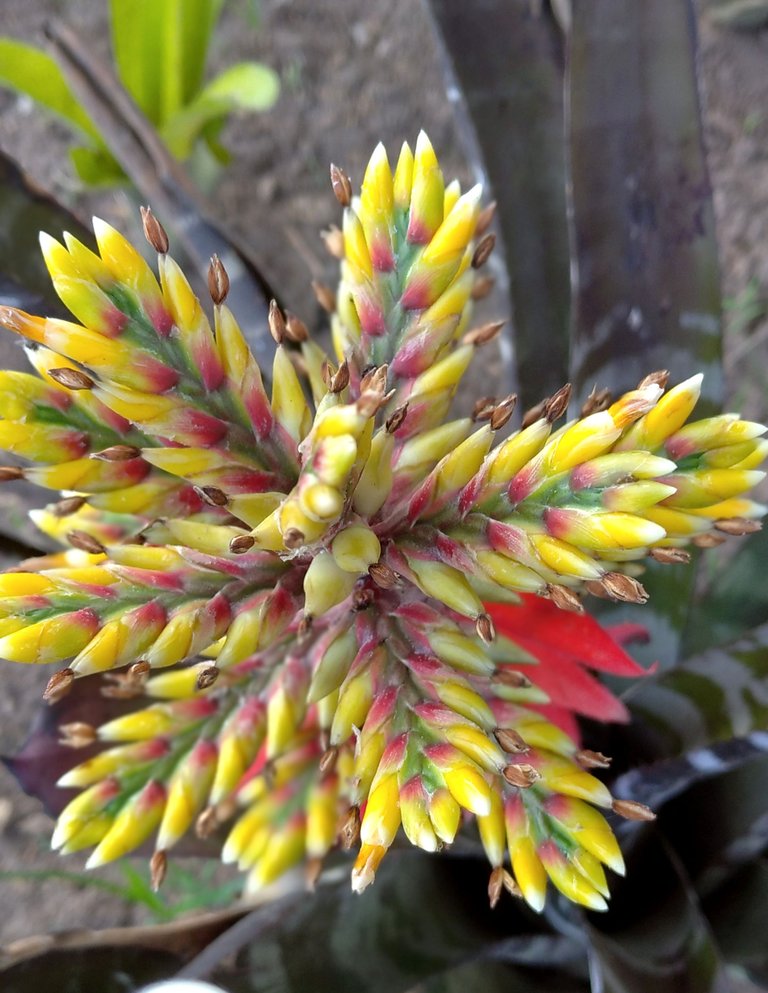
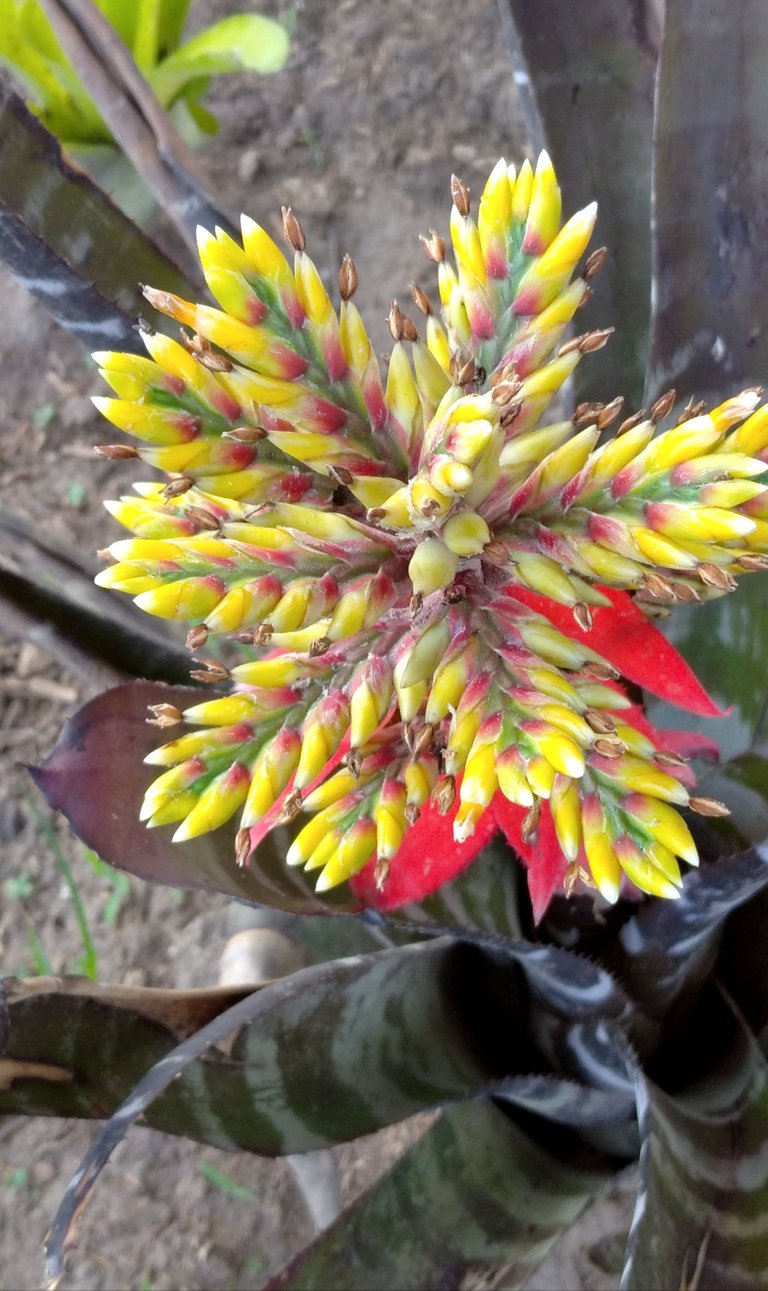


I can tell you that to get information about this last kind of bromeliad I spent without lying to you more than 2 hours from one page to another. I could only see 1 photo of this flower in all the pages I searched, so it is a rarity of nature that I managed to see. For this reason I am happy to know it closely and admire its incomparable beauty. All these described plants leave a lesson of survival for the one who observes them. They show us that in order to fulfill their purpose they must develop capacities and qualities and thus survive their environment. It teaches us that we can all adapt to the circumstances that surround us and survive, that is called resilience.
Les puedo decir que para conseguir información sobre esta última clase de bromelia pase sin mentirles más de 2 horas de una página a otra. Solo pude ver 1 foto en todas las páginas que busque de esta flor, por tanto es una rareza de la naturaleza que logré ver. Por este motivo me siento feliz de conocerla de cerca y admirar su inigualable belleza. Todas estas plantas descritas dejan una lección de supervivencia para el que las observa. Nos demuestran que para cumplir su propósito deben desarrollar capacidades y cualidades y así sobrevivir a su entorno. Nos enseña que todos podemos adaptarnos a las circunstancias que nos rodean y sobrevivir, eso se llama resiliencia.

✅Other flowering plants that I got and that give a special touch to the site are some small lilies and another type of plant with small flowers that form a very nice bouquet of strong colors.
Otras plantas con flores que conseguí y que le dan un toque especial al sitio son unos pequeños lirios y otro tipo de planta con pequeñas flores que forma un ramo muy lindo de colores fuertes.
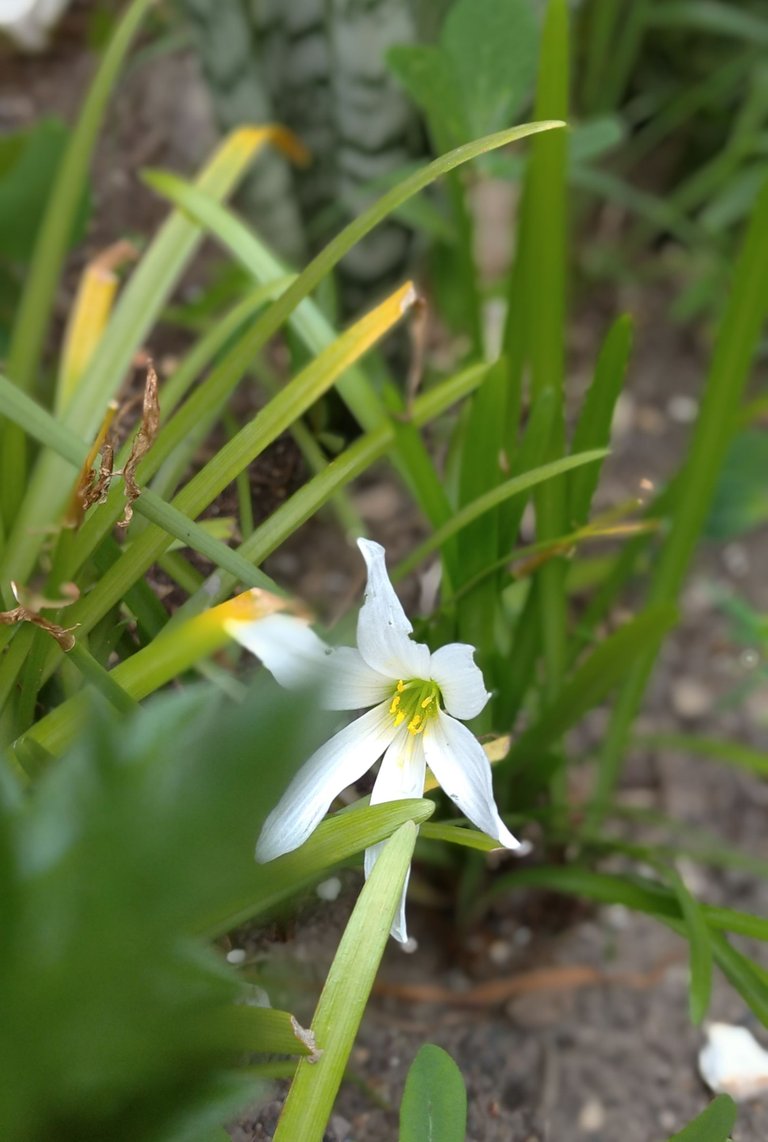
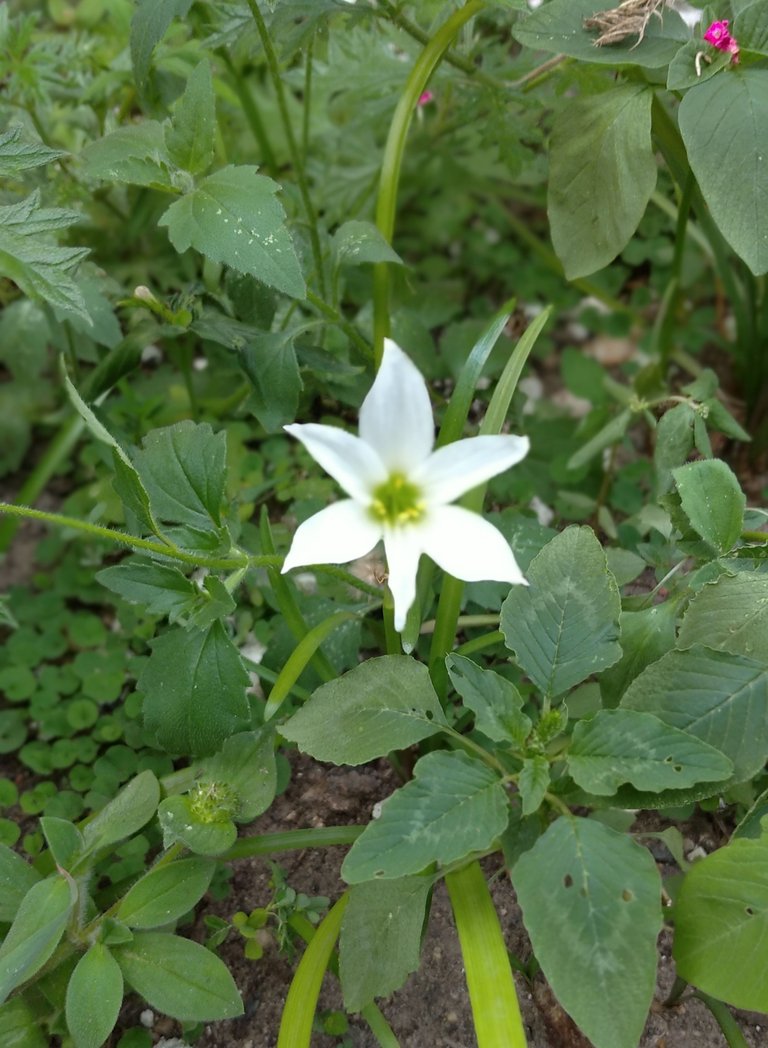
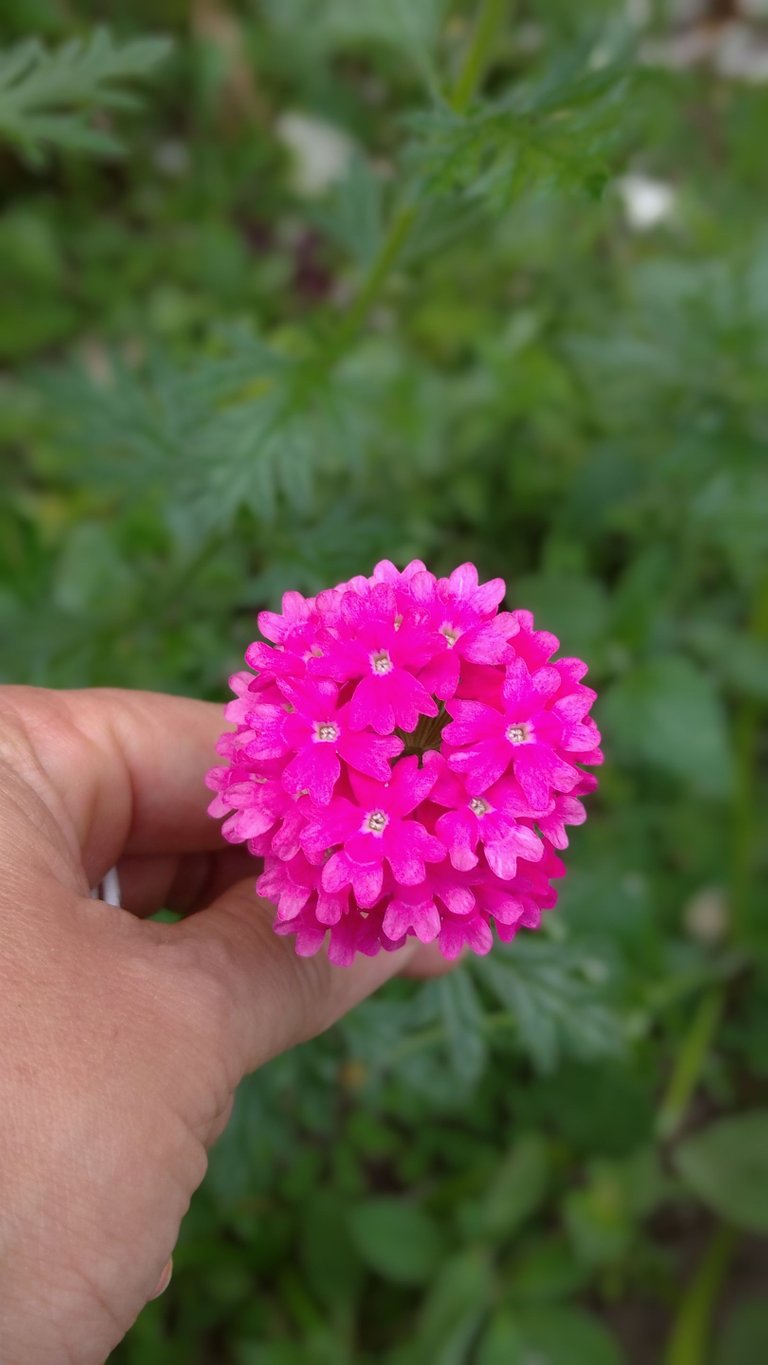
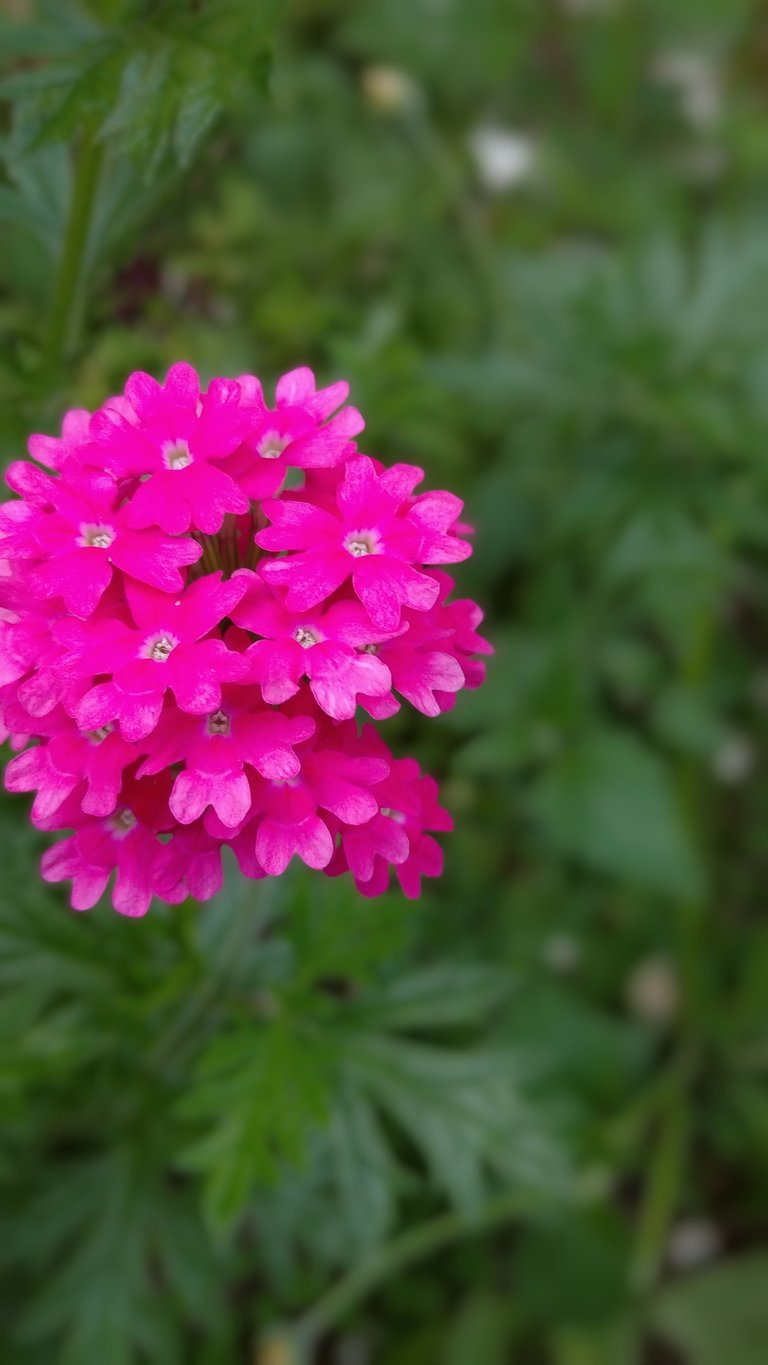
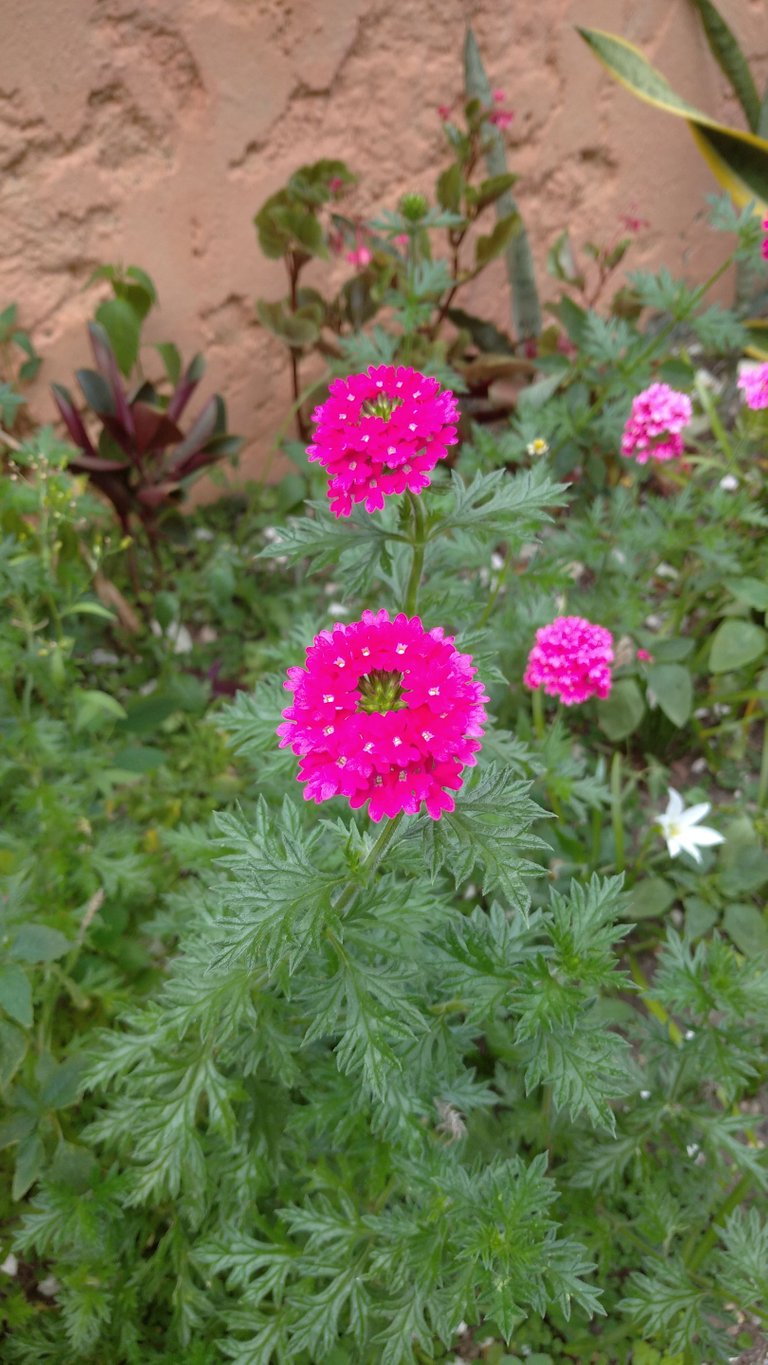
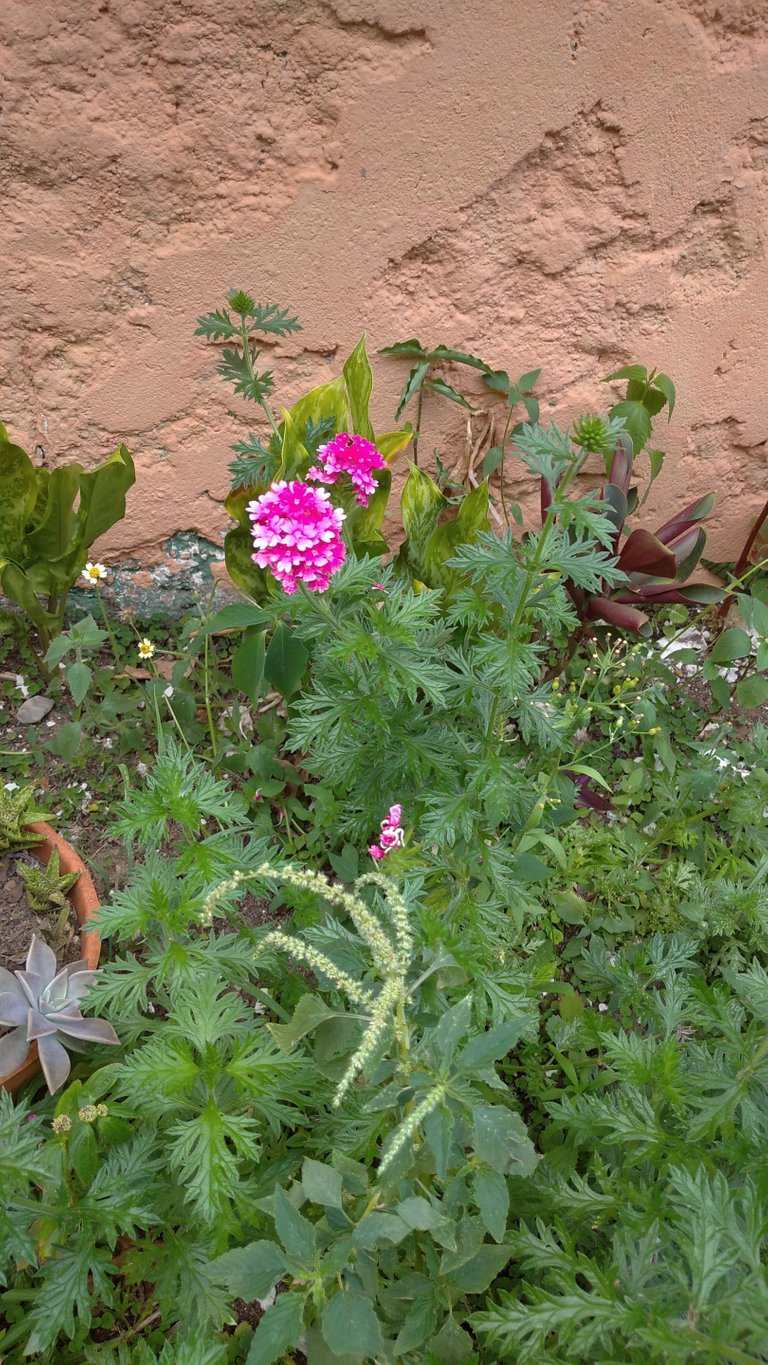

When I research and discover the awesomeness of nature in all its forms and species, I thank the "Creator" God for all his gifts. I am happy to share what I learn with you my dear nature loving hivers. The photos are my property. Until next time. I wish you a happy weekend.
Cuando investigo y descubro lo impresionante de la naturaleza en todas sus formas y especies, agradezco al Dios "Creador" por todos sus regalos. Me alegro de poder compartir lo que aprendo con ustedes mis queridos hivers amantes de la naturaleza. Las fotos son de mi propiedad. Hasta una próxima oportunidad. Les deseo feliz fin de semana.
Sources of reference:// Fuentes de consulta:
1 2 3 4

Banner made with canva.com //Banner realizado con canva.com
Separator:** Separadores de texto para Blog
The rewards earned on this comment will go directly to the person sharing the post on Twitter as long as they are registered with @poshtoken. Sign up at https://hiveposh.com.
Hola @arialvi75 felicidades con esta publicación, tiene muy buenas fotos y contenido... No me imaginaba que algunas de estas plantas se les conociera con el nombre de "espinazo del diablo, lengua de suegra o lengua de tigre"... Me encantó la foto de la flor de la bromelia "pluma de indio".
Saludos.
Gracias @jossalvia, por pasar, leer y por tu comentario sincero.🤗🌼🌺🌸
Felicidades amiga! Hermoso Post! Preciosas fotos. Al igual que tú, infinitamente agradecida a nuestro maravilloso Dios por su maravillosa creación que nos motiva a amarlo cada día más, al tiempo que se nos rebosa nuestro corazón de agradecimiento. Saludos y bendiciones para ti!
Gracias @letrasyaventuras. La naturaleza nos enseña mucho de quién creó todo. Ser agradecidos por esto nos hace verdaderamente felices. Gracias por leer y comentar. Cariños para tí.!!🤗🌸🌻🌼
We appreciate your work and your post has been manually curated by @redheadpei on behalf of Amazing Nature Community. It will be added to the weekly botany curation post. Keep up the good work!
Thank you @redheadpei for appreciating the work done. Much appreciated!👍🤗🌸🌻🌺
Your level lowered and you are now a Red Fish!
Check out the last post from @hivebuzz:
Support the HiveBuzz project. Vote for our proposal!